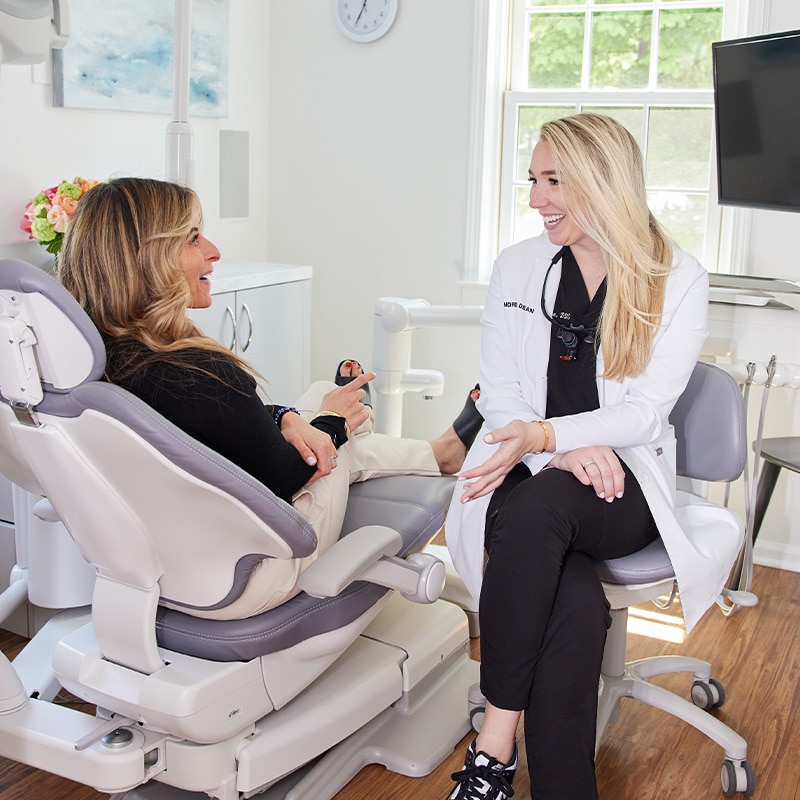
What Is TMJ Treatment?
TMJ disorder is a condition affecting the temporomandibular joints, the place on each side of the face where the lower jaw connects to the head. If you put your fingers right in front of the opening of your ears and move your jaw, you’ll feel your TMJ working. This joint can become irritated by overuse or a pulled muscle or ligament, resulting in pain and limited range of motion, among other symptoms. TMJ treatment addresses this condition and provides relief
Imperial Dental Associates provides TMJ treatment in Westport, Connecticut. To learn more, call 203-227-2520 or contact us today to schedule an appointment.
Signs You Need TMJ Treatment
The following signs and symptoms often indicate TMJ disorder:
- Pain in the jaw
- Pain when chewing
- Limited range of motion in the jaw
- Ear pain
- Headache, especially in the temple region of the head
- Popping or clicking sound when moving the jaw
- Swelling around the joint
- Muscle tension in the face
Why Choose Imperial Dental Associates?
TMJ treatment is most often provided by dentists because they specialize in conditions affecting the structure of the jaw. Imperial Dental Associates provides treatment for TMJ disorder that can provide lasting relief of your symptoms. We get to the source of the problem to find out why TMJ disorder is occurring and determine how to prevent flare ups in the future.
Treatment Options for TMJ
At the onset of symptoms, start with the following treatments:
- Apply ice to the affected area
- Rest your jaw as much as possible
- Eat soft foods to avoid chewing
- Take anti-inflammatory pain relievers, such as ibuprofen
If symptoms persist for more than a week after applying the above treatments, contact us. After an evaluation we can provide additional treatment, such as:
- Botox. Botox is an injectable medication that can reduce inflammation and ease muscle tension to provide relief of TMJ symptoms.
Frequently Asked Questions About TMJ Treatment
Contact Us
Call 203-227-2520 or contact us today to learn more and schedule an appointment.
